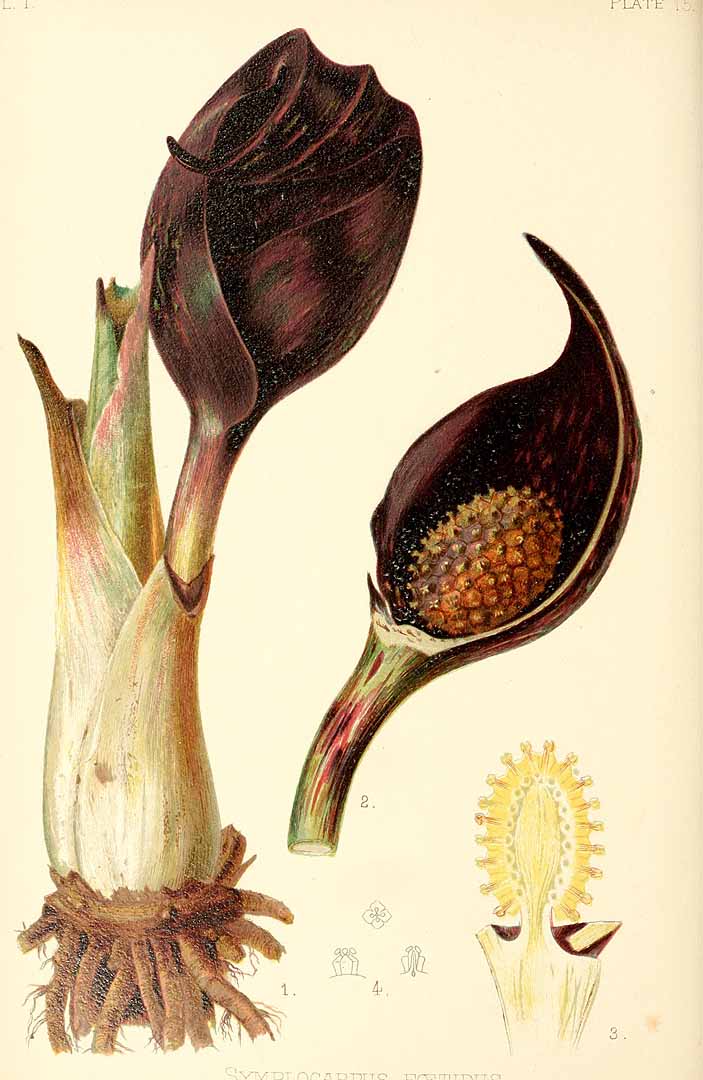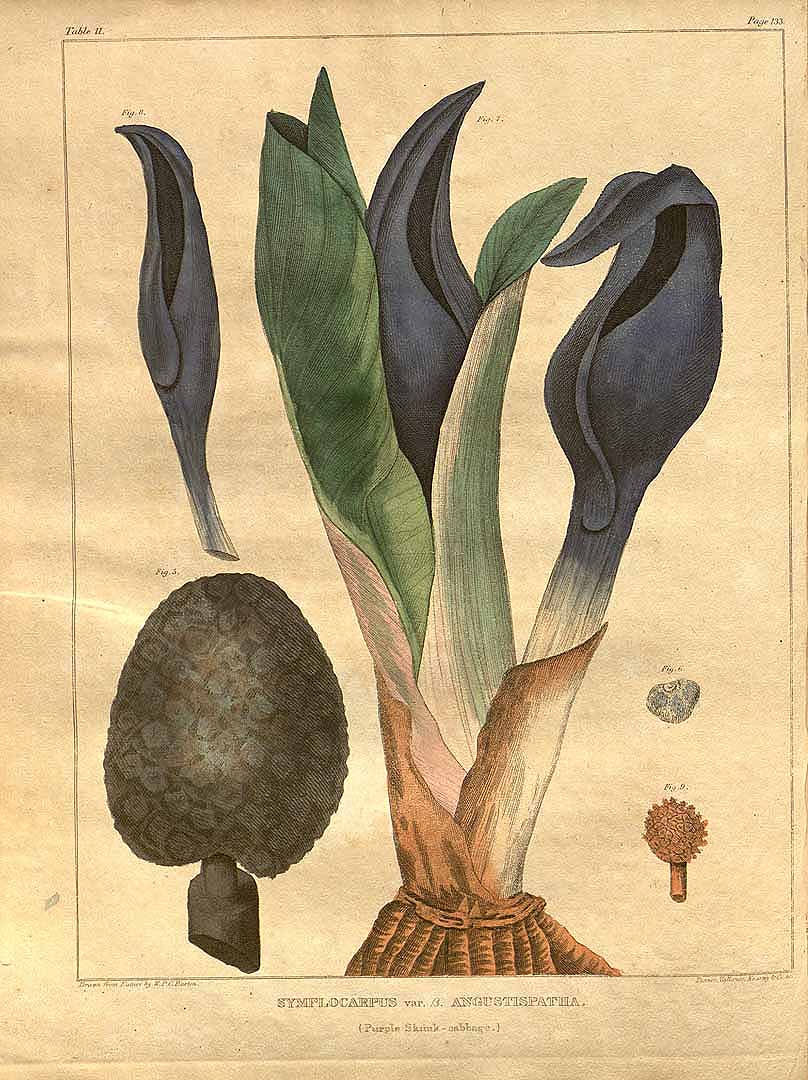! Nouveau site ici !
Vita > Plantae > Magnoliophyta > Liliopsida > Arales >
Araceae > Symplocarpus
Symplocarpus foetidus
![Illustration Symplocarpus foetidus, Par Sweet, R., British flower garden (1823-1837) Brit. Fl. Gard. vol. 1 (1823-1825) [tt. 1-100] t. 57, via plantillustrations](../inc/images/illustrations/symplocarpus_foetidus2.jpg )

 | ** - ***
| ** - ***
Vita > Plantae > Magnoliophyta > Liliopsida > Arales >
Araceae > Symplocarpus
Symplocarpus foetidus
![Illustration Symplocarpus foetidus, Par Sweet, R., British flower garden (1823-1837) Brit. Fl. Gard. vol. 1 (1823-1825) [tt. 1-100] t. 57, via plantillustrations](../inc/images/illustrations/symplocarpus_foetidus2.jpg )
Une herbe qui pousse dans les marais. Il continue de croître d'année en année. Il atteint 30 à 60 cm de hauteur. Les feuilles sont vert pâle et mesurent 30 à 40 cm de large et jusqu'à 1,2 m de long. Les ... (traduction automatique)
→suite
⬀
Le  donne accès au menu
donne accès au menu (c'est votre point de repère) 😊 ;
En dessous vous avez la classification, à partir de la vie (Vita, premier rang) jusqu'à la classe au dessus de la plante, dont vous trouvez ensuite le nom scientifique/botanique (latin) puis le nom commun (français), le cas échéant ;
C'est aussi un lien vers la fiche complète (tout comme la ✖, en bas à droite, et le +, en dessous de la description) ;
Vient alors l'illustration (ou ce qui la remplace, en attendant), la comestibilité :
Et en bas
⬂

![Illustration Symplocarpus foetidus, Par Curtis, W., Botanical Magazine (1800-1948) Bot. Mag. vol. 60 (1833) [tt. 3206-3289] t. 3224, via plantillustrations Illustration Symplocarpus foetidus, Par Curtis, W., Botanical Magazine (1800-1948) Bot. Mag. vol. 60 (1833) [tt. 3206-3289] t. 3224, via plantillustrations](../inc/images/illustrations/symplocarpus_foetidus.jpg )
![Illustration Symplocarpus foetidus, Par Sweet, R., British flower garden (1823-1837) Brit. Fl. Gard. vol. 1 (1823-1825) [tt. 1-100] t. 57, via plantillustrations - Fermer Illustration Symplocarpus foetidus, Par Sweet, R., British flower garden (1823-1837) Brit. Fl. Gard. vol. 1 (1823-1825) [tt. 1-100] t. 57, via plantillustrations - Fermer](../../inc/images/illustrations/symplocarpus_foetidus2.jpg )






